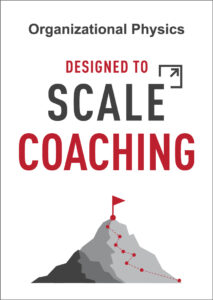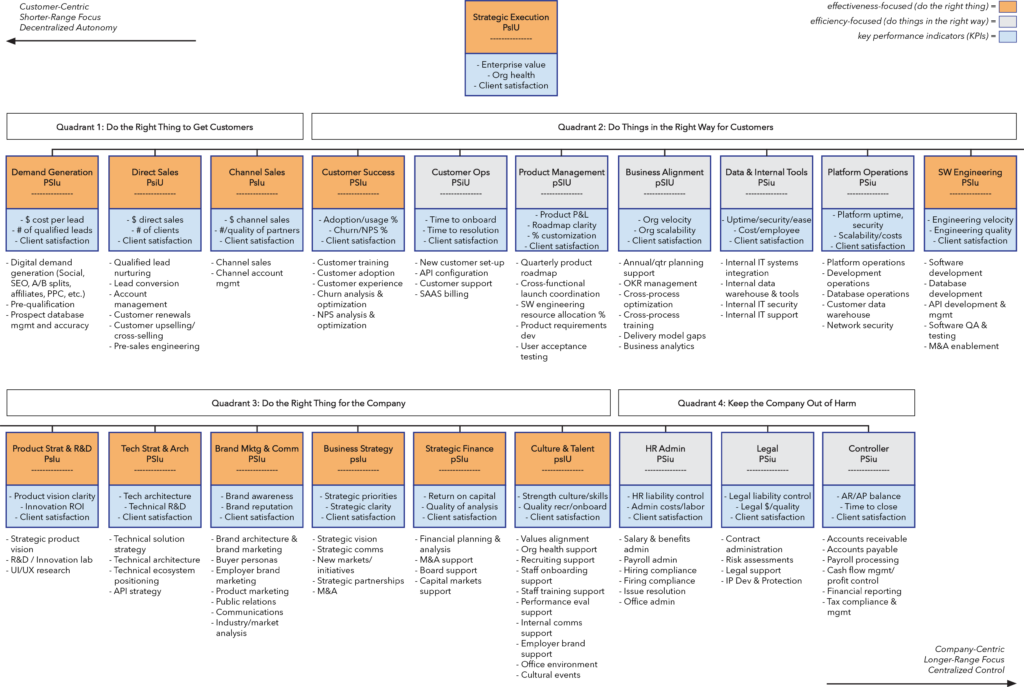Structure Design:
How to Design Your Company to Scale
 A key element of the Designed to Scale Coaching Program is actually designing the right new structure to support your evolving business strategy. In this part of the program, your coach designs your new structure, and then you refine and implement it together.
A key element of the Designed to Scale Coaching Program is actually designing the right new structure to support your evolving business strategy. In this part of the program, your coach designs your new structure, and then you refine and implement it together.
“Structure” is a loaded term, and my approach to designing and changing structures is unique. Watch these videos to see if this approach resonates with you. If it does, continue reading to find out more.
What is Structure?
Structure is how your business is organized. If you want to get your business to do something new, then at key points in its development, you’ll need to look at and change its structure.
The 3 Building Blocks of Structure
The three design elements of organizational structure are: Functions, Location, and Authority. Use these three building blocks to avoid some common pitfalls and design the right new structure for your business stage and strategy.
The 6 Rules of Structure
There are 6 Rules of Structure to follow when designing a scalable business structure. They are:
1. If the strategy or lifecycle stage changes, change the structure.
2. Don’t allow short-range functions to control long-range ones.
3. Don’t allow efficiency functions to control effectiveness ones.
4. Don’t allow centralized control to overpower decentralized autonomy.
5. Put people into roles where they can focus and thrive.
6. Process brings structure alive.
Design Controls Behavior
Design controls behavior. If you want new business behaviors, change the the organizational structure The 6 Rules of Structure provide visibility into key underlying polarities at work within every business. A key idea is to not treat polarities as problems to be solved. Polarities (e.g., short-range vs. long-range, efficiency vs. effectiveness, control vs. autonomy) must be harnessed to create the right amount of tension in the business for sustained strategic execution.
The Right Structure for the Business Stage
What is the right organizational structure for the current and emerging lifecycle stage of your core business and any business units? Using the Organizational Physics Strategy Map as a guide, this video shows that:
- A Pilot It stage initiative requires very limited structure.
- A Nail It stage initiative benefits from a functional structure.
- A Scale It stage initiative requires an evolving structure (based on the functions defined in the Nail It stage).
- A Milk It stage structure requires making a break or escape from the legacy structure.
Introduction to the 4-Quadrant Structure Map
The Structure Map is a powerful thinking tool to identify any current structural breakdowns occurring in your business, to design the right new scalable growth structure, and to have easier and more pointed structural conversations with your team.
Download the Structure Map template
How this Program Works
Using the Organizational Physics Structure Map, and based on our shared understanding of the business strategy and needs, we will map the functions/roles accountable for each step in the customer, product, and employee journeys to design a new structure. As a result, you will have a structure that is scalable and designed for your current lifecycle stage and business strategy. It will provide vivid clarity and ownership over roles as well as improved knowledge of talent gaps and new hire priorities to scale. We will spend one to two weeks iterating on the design before the next step of placing people. This helps to ensure that we have made a clean break from the status quo and that the structure is the right one for this strategy.
What an Evolving Structure Looks Like
An Evolving Structure is a custom structure created by following the six rules of structure above. Using the business strategy and the ideal customer, product, and employee journeys, the structure identifies the functions the business must perform, the location of each function in the structure, and the authority delegated to each function. Each function in the structure is described by its purpose, its time horizon (whether it should be focused on short-term or long-term issues), its orientation (whether it should be more effective or efficient in its approach), its preferred PSIU style, its key performance indicators, and its accountabilities. By mapping everything into four quadrants, it becomes easy to understand and evolve the structure as business needs change.
Below is a sample structure from my book Designed to Scale that was created for the fictional company PeoplePower.
If the colors, terminology, or overall design don’t make sense to you yet, you’ll need to read the book and it should quickly become clear why the design looks the way it does. Its not random. It’s built upward from first principles. Your own company’s structure will be unique to its lifecycle stage, business model, and strategy.
Frequently Asked Questions
1. How long does it take to design the new structure?
It usually takes us 1 to 2 weeks to design the new structure for you, which we can begin as soon as we have alignment on the strategy and key process cycles.
It will take you another 1 to 2 weeks to digest the structure, discuss changes together, and refine it until you are confident this is the right structure to scale, with some details still to figure out. Prior to moving onto the next step of placing people, we need you to be 85 percent or better confident that this structure, as it is designed, is the right one for your business model and lifecycle stage and that it will help you to reduce internal friction and improve execution speed.
2. How long does it take to implement the new structure?
This is a trick question because we’re not in implementation mode yet! We are only backstage. Together with your trusted advisor, we iterate, design, and think deeply. That said, there is an art to rolling out the new structure quickly, in a matter of weeks actually, and without causing a lot of disruption. We will accomplish this during the next stage, the Level 3 Strategic Execution Program.
3. Isn’t my business more complex than a functional structure can handle?
With a focus on functions, you may be asking whether you will end up with a functional structure in the end. The answer is not necessarily. Your individual business model and strategy may ultimately require another type of structure such as a product, matrix, or divisional one. However, by taking a functional approach to start with, we can later segment by division, products, or geography or create a matrix structure much more easily and with a deeper level of insight. Think of functions as building blocks. You can stack them any way you need to.
How to Apply
If you like this way of thinking and want to engage in a similar process for your company, schedule a consultation.


